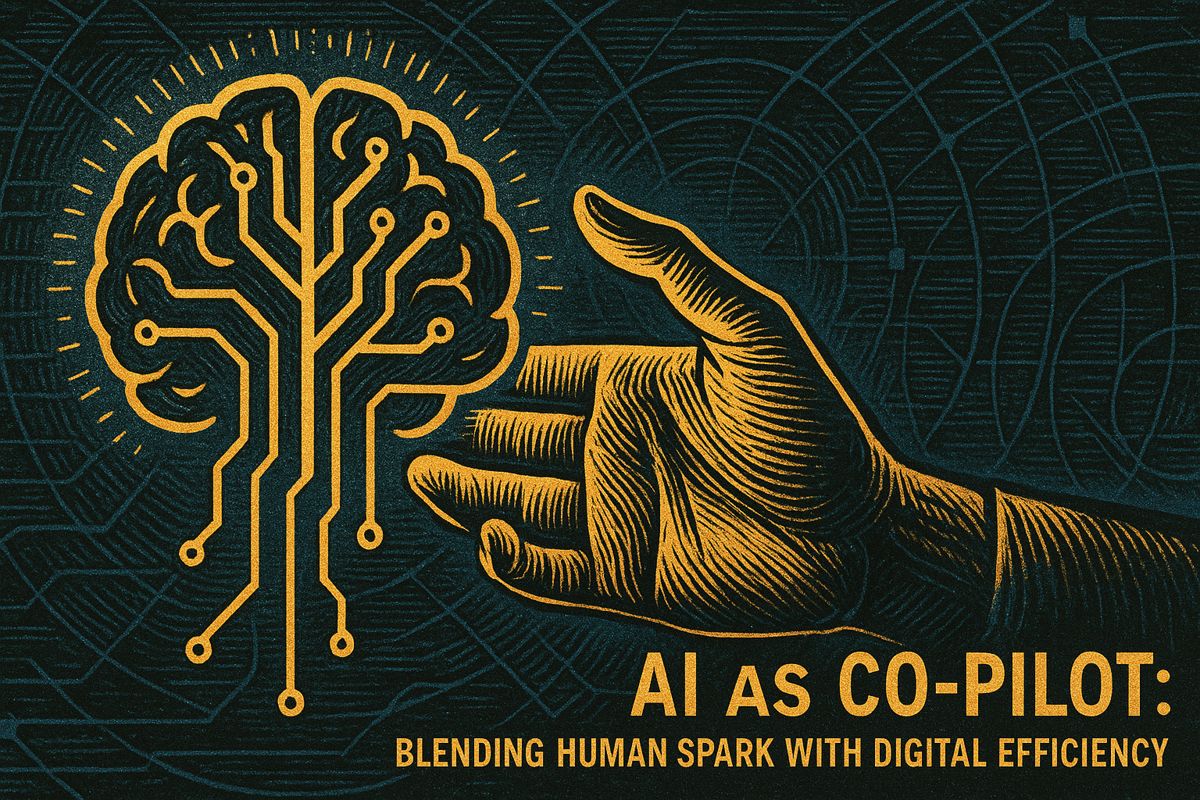In 2025, AI acts as a creative partner, not just a helper, in brainstorming sessions. Tools like ChatGPT and Gemini spark more ideas by both giving and taking prompts, helping teams come up with almost twice as many ideas. However, humans still need to filter ideas to keep them fresh and unique. Teams use simple rules, mix different types of input, and rely on both AI and people to create the best results. AI speeds up creativity, but people make sure ideas stay original.
How is AI transforming creative brainstorming in 2025?
AI is now a bidirectional creative co-pilot, actively suggesting prompts and ideas, not just responding to commands. Teams using tools like ChatGPT, Claude, and Gemini achieve up to 1.8× more ideas per hour, blending human insight with AI-generated suggestions for richer, more diverse brainstorming sessions.
AI is no longer just a chatbot waiting for commands. In 2025, leading design, marketing and product teams are treating it as a bidirectional creative partner that can both respond to and generate prompts, effectively turning one-way Q&A sessions into turbo-charged co-creation loops.
How the shift happened
Early 2024 experiments by Dartmouth researcher Dan Rockmore showed that large language models don’t only take prompts – they give them back, surfacing angles humans hadn’t considered. Once designers noticed a 25 % jump in creative output when they let the model suggest the next prompt, adoption snowballed.
Tool map: who does what in 2025
| Tool/Model | Core strength in brainstorms | Typical workflow step |
|---|---|---|
| *ChatGPT * (voice mode) | Rapid interactive ideation, memory across sessions | Opening divergent burst |
| *Claude * | Nuanced perspective-shifting, ethical filters | Mid-round reframing |
| *Gemini * | Multimodal sparks (text + image) | Visual concept sketching |
| *Team-GPT * | Custom LLMs tuned to brand tone & product lexicon | High-volume variant testing |
| Miro AI | Auto-clusters sticky notes, reveals hidden themes | Convergent synthesis |
- Sources: Team-GPT comparison and Zapier’s 2025 tool review*
Real-world numbers
- 94 % of participants in a Wharton brainstorming study who used ChatGPT converged on the same toy name (“Build-a-Breeze Castle”), while human-only groups produced 100 % unique names – a cautionary stat that diversity still needs human curation (Nature Human Behaviour, May 2025).
- Enterprise usage analytics tracked by Team-GPT show 1.8× more ideas per hour when teams alternate between AI-generated prompts and human refinement.
Practical playbook for teams today
- Set bidirectional rules: every third prompt must come from the AI to break habitual thinking.
- Layer inputs: combine voice memos, sketches and text inside the same ChatGPT thread for richer starting material.
- Use “diverge gates”: pause every 10 min to let Miro AI cluster and surface under-explored branches before continuing.
- Lock IP early: export final boards to Notion AI which timestamps contributions, simplifying ownership debates later.
- Schedule human curation: dedicate the last 15 % of workshop time for human-only filtering to restore idea diversity.
What’s next (2026 outlook)
Onlim’s trend forecast points to real-time market data infusion – imagine asking Gemini to brainstorm ad copy while it streams live Twitter sentiment and adjusts metaphors on the fly. Meanwhile, enterprise-grade Team-GPT will ship usage heat-maps that highlight which team members are silent idea generators, nudging more inclusive participation.
By treating AI as an active co-author instead of a passive search engine, creative teams in 2025 are gaining speed without surrendering originality – provided they keep a human hand on the steering wheel during the final mile.
How does AI actually “give prompts back” and change the way we brainstorm?
Traditional brainstorming is one-directional: humans supply the questions, the whiteboard fills up, and that’s it. AI flips the script. Systems like Claude and ChatGPT can propose a starting question before you even type one, then continue to re-prompt you based on your answers, creating a dynamic, looped dialogue. Dan Rockmore reports that AI doesn’t just take prompts – it actively gives them, shifting our mindset from query-response to co-creation. In early 2025 pilots, marketing teams using this bidirectional loop generated 25 % more distinct concepts per session and cut first-draft ideation time by nearly half (source).
What are the best AI tools for teams today, and which features matter most?
| Tool | Killer feature | Why teams like it |
|---|---|---|
| ChatGPT | Voice Mode + memory across sessions | Speak ideas out loud; the AI recalls earlier context and files |
| Miro AI | Auto-cluster sticky notes in real time | Visual maps appear as you talk; great for design sprints |
| Gemini | Multimodal prompt handling | Drop a mood-board image and get instant taglines or story arcs |
| Notion AI | Integrated docs → tasks | Brain dump turns straight into spec sheets and Jira cards |
| Claude | Perspective-shifting questions | Good at asking “What if we inverted this assumption?” |
In a 2025 survey of 300 creative teams, 68 % listed real-time collaboration and 55 % listed integration with project management as must-have features (source).
Can AI replace human creativity or will it just create echo-chambers?
Evidence so far says neither extreme is true. When Wharton researchers ran controlled brainstorming tests, groups aided by ChatGPT produced 94 % less idea diversity – everyone converged on near-identical solutions unless humans stepped in to remix or challenge the AI output (source). The sweet spot appears to be a hybrid loop: AI suggests, humans refine, AI re-suggests. Teams following this rhythm report higher creative confidence and more original final concepts.
How do we handle intellectual property when the AI contributes?
Ownership rights depend on the platform’s terms:
- ChatGPT / Gemini / Claude grant users full ownership of generated text
- Some visual generators keep limited rights, so always read the fine print
- Best practice is to document AI involvement and run outputs through originality checks before publishing
Legal teams at three Fortune-500 brands now require an “AI log” attached to every campaign brief to stay compliant (source).
What’s coming next – 2026 and beyond?
Look for customizable generative models (think Team-GPT tuned to your brand voice), voice-first interfaces, and live data feeds (market trends or customer sentiment injected into the whiteboard in real time). Gartner projects the creative AI market will hit $30 billion by 2026, driven by enterprise adoption and tighter integration with tools like Asana, Notion, and Figma (source).
Bottom line: treat AI as an intern with infinite sticky notes, not the final author.



















